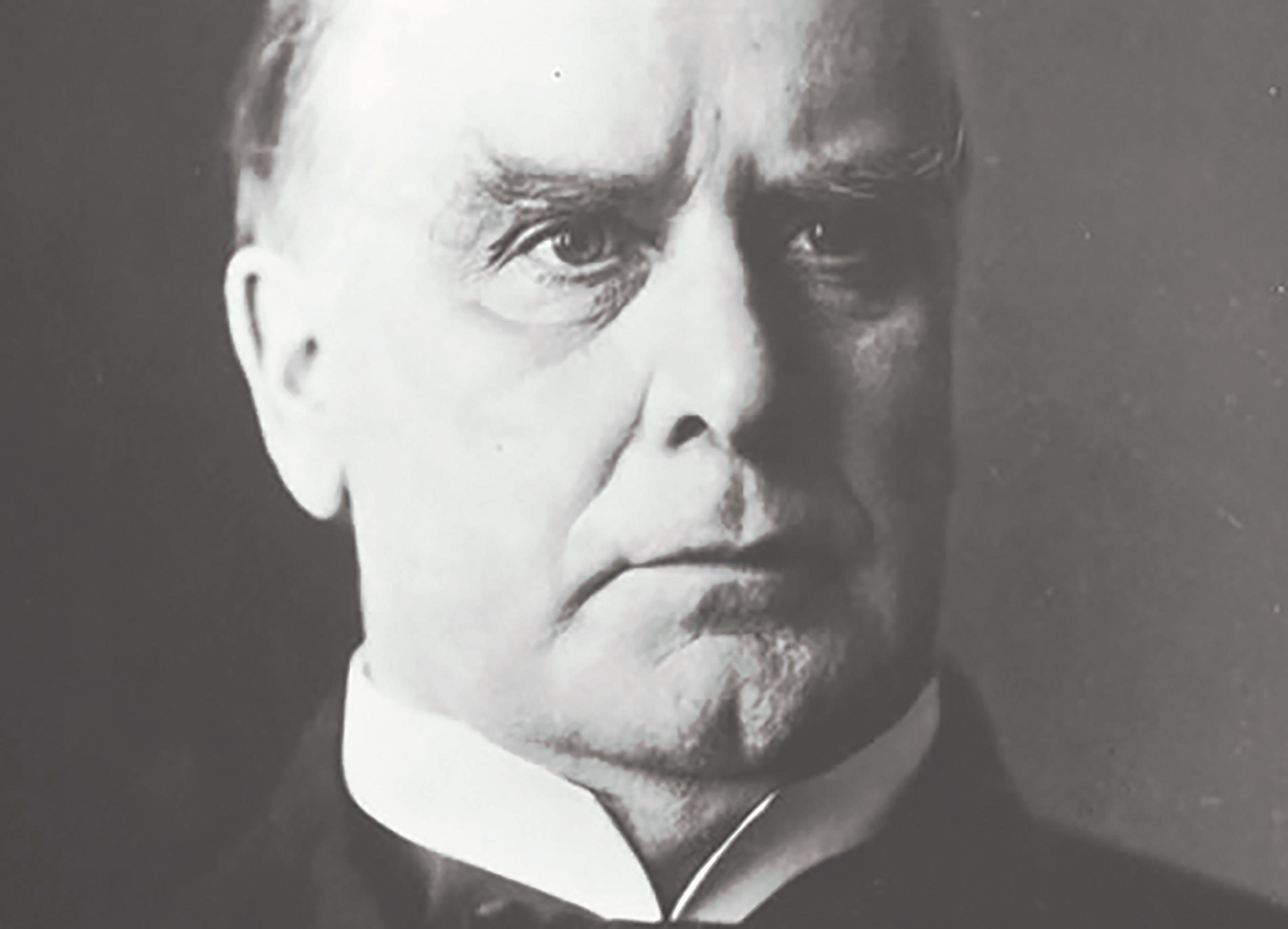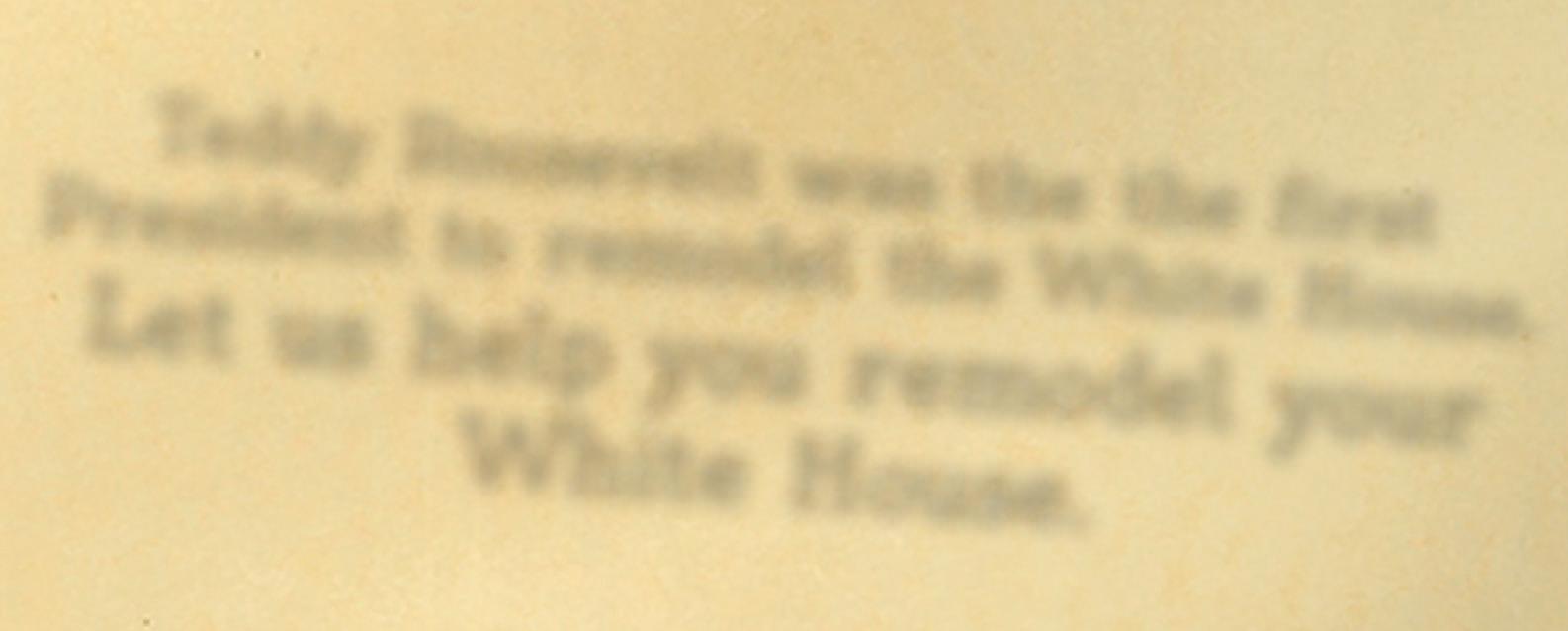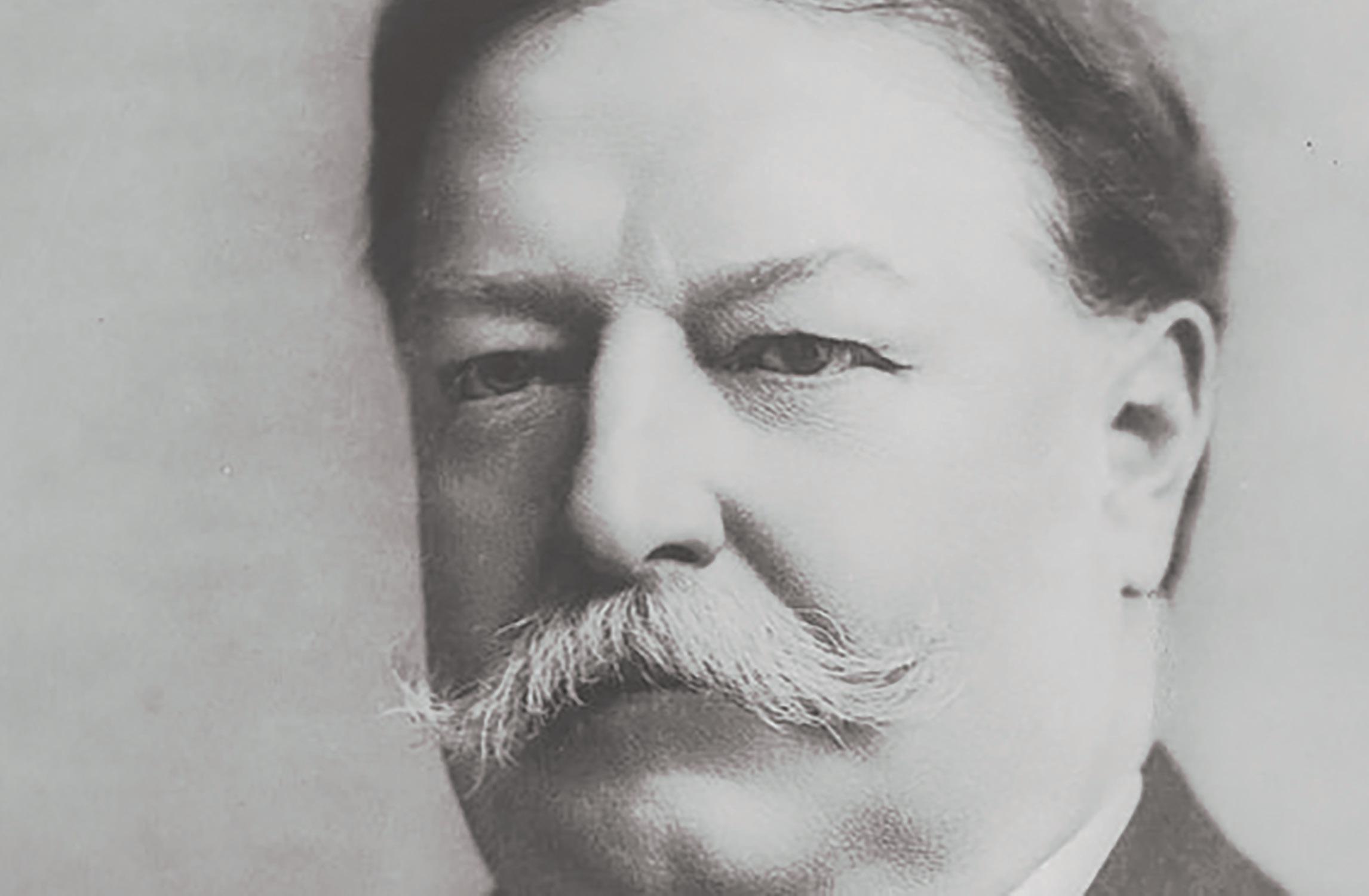
9 minute read
25th
William McKinley was born on January 29, 1843, in Niles, Ohio. He was the seventh of nine children. He attended Allegheny College in Meadville, Pennsylvania, for one term before enlisting in the Union Army during the Civil War. After the war, McKinley was admitted to the New York Bar after graduating from Albany Law School.
In 1871, he married Ida Saxton. McKinley became active in the Republican Party and campaigned for Rutherford B. Hayes’ gubernatorial run in Ohio. He also gained a reputation as an excellent and compassionate lawyer after he refused payment from a group of 33 miners he successfully defended (except for one) for rioting against their employer. McKinley was elected to the Ohio House of Representatives in 1877 and served until 1882. He was elected a second time in 1885 and served until 1891. In 1891, he was elected governor of Ohio, where he passed legislation advocating worker safety and worker Unions. McKinley further cemented his reputation as an advocate of the working man in 1895 when he paid for provisions of food for a group of impoverished miners and organized a charity drive benefiting 10,000 people living in poverty in Ohio. In 1896, McKinley received the Republican nomination for President of the United States. McKinley campaigned on a platform that emphasized industry, banking, and opportunity for all and defeated his Democratic opponent William Jennings Bryan, becoming the nation’s 25th President.
As President, McKinley was true to his word. Business and agriculture thrived during his presidency. Nevertheless, his presidency was dominated by foreign relations, especially with Spain. The United States had interests in several Spanish colonies including Cuba and the Philippines. These colonies were thought to be in virtual rebellion thanks to sensationalized stories in the newspapers and publications of William Randolph Hearst. Such stories stirred the emotions of its readers and prompted many to urge McKinley to declare war on Spain. In 1898, the warship U.S.S. Maine was mysteriously sunk in Havana Harbor (Cuba), killing 260 men. Congress soon declared war and U.S. forces easily defeated the Spanish in Cuba and the Philippines in what came to be known as the Spanish American War. In the
William McKinley


treaty that followed, the United States gained ownership of the Philippines, Guam, and Puerto Rico and temporary control over Cuba. Soon after, the United States annexed the Hawaiian Islands in the Pacific Ocean. The acquisition of the Philippines would lead to the Philippine–American War. In 1900, McKinley was re-elected as President, defeating William Jennings Bryan for a second time. That year, he signed the Gold Standard Act which made gold the only standard for redeeming paper money.
On September 5, 1901 as he was attending the Pan-American Exposition in Buffalo, New York, he was shot by anarchist Leon Frank Czolgosz. Despite the fact that doctors thought McKinley would initially survive, his wounds became gangrenous and he died on September 14th. Theodore Roosevelt would be sworn in as the nation’s 26th president.
His killer would be executed by electric chair. Today, there are numerous monuments to McKinley throughout the country. Schools, counties, streets, and statues are dedicated to him in many different states. He is interred at the McKinley Memorial Mausoleum in Canton, Ohio, near the McKinley Presidential Library and Museum.
Theodore Roosevelt was born on October 27th, 1858 in New York City. In 1880, he graduated from Harvard University and enrolled in Columbia University’s school of law.
His political career began in 1882 in the New York State Assembly. In 1886, after spending three years at his North Dakota ranch, he returned to New York City and ran unsuccessfully for mayor. Nevertheless, his political career continued to blossom. In 1889, he was appointed to the U.S. Civil Service Commission by President Benjamin Harrison for which he served six years. In 1895, he became president of the New York City Board of Police Commissioners. Two years later, in 1897, he was appointed assistant secretary of the Navy by President William McKinley.
In 1898, in the wake of the U.S. war with Spain, Teddy Roosevelt resigned from the Navy and organized the first regiment U.S. volunteer cavalry, known as “Roosevelt’s Rough Riders”. The “Rough Riders” were 2,000 specially selected men of different occupations and backgrounds trained by Roosevelt in San Antonio, Texas for special combat against the Spanish in Cuba. On June 20th, 1898, the “Rough Riders” left for Cuba. They landed at Daiquiri, Cuba and fought their way toward the Spanish garrison at Santiago. As they approached Santiago, the “Rough Riders” were attacked at San Juan Hill. Despite vigorous resistance from the Spanish, and mounting casualties, the “Rough Riders” charged up San Juan Hill, drove back the Spanish, and forced them to surrender, effectively ending the war. Teddy Roosevelt was a national hero!
In 1899, after the Spanish-American War, Theodore Roosevelt was elected governor of New York. Soon after, in 1900, he was nominated as vice presidential candidate on the Republican ticket. In 1901, he was inaugurated as William McKinley’s vice president. Roosevelt, however, would occupy the office of vice president for only a short time. Merely six months after becoming vice president, President William McKinley was assassinated in Buffalo, NY. On September 14, 1901, Theodore Roosevelt was sworn in as America’s 26th president. At the time he took office, he was the youngest president in the history of the United States.

Theodore Roosevelt served two eventful terms as president. In his first term, he supported a rebellion in Pana-
Theodore Roosevelt
ma that cleared the way for that country’s independence from Colombia, as well as for the U.S. acquisition of land in Panama that would later be used for construction of the Panama Canal. He fought vigorously against corporate corruption, and pushed for the dissolution of the Northern Securities Company for violating the Sherman Antitrust Act (forming a monopoly). In 1905, President Roosevelt helped mediate a peace treaty between Russia and Japan for which he was awarded the Nobel Peace Prize. In 1906, Roosevelt signed the Hepburn Act, which awarded greater powers to the Interstate Commerce Commission and the Federal Food and Drug Act. Furthermore, Roosevelt started the U.S. Forest Service and signed the 1906 Antiquities Act under which he proclaimed 18 national monuments, 5 national parks, 51 wildlife refuges and 150 national forests. In 1908, the Bureau of Investigation was created to conduct investigations for the Justice Department.



After his second term as president, Teddy spent the rest of his life exploring and hunting. He died June 4th, 1918. Theodore Roosevelt National Park, in the Badlands of North Dakota, was dedicated after his death. Roosevelt was one of four presidents rendered on Mount Rushmore in South Dakota.
William Howard Taft was born on September 15, 1857, in Cincinnati, Ohio . He had four brothers and sisters. His father, Alphonso Taft, served as Secretary of War under Ulysses S. Grant. William attended Yale University where he became a member of the Skull and Bones secret society, co-founded by his father in 1832. Taft graduated at the top of his class and attended Cincinnati Law School. In 1886, he married his high school sweetheart Helen Herron. The next year, he was appointed judge of the Ohio Superior Court.
His political career began in 1890 after he was appointed Solicitor General by President Benjamin Harrison. From 1901 to 1903, he reluctantly served on a committee established by President William McKinley to establish a civilian government in the newly acquired Philippines. Taft was soon named Governor-General and became very popular among American and Filipinos. In
1904, President Theodore Roosevelt appointed him as Secretary of War. In this position, Taft helped supervise the building of the Panama Canal, served as Secretary of State, and even took on presidential duties when Roosevelt was abroad. With support from Theodore Roosevelt, Taft ran for President in 1909. Taft easily won the election becoming the country’s 27th president, defeating William Jennings Bryan, who had been defeated twice by President McKinley, before losing again.
Taft’s presidency was highlighted by his strengthening of the Interstate Commerce Commission, expansion of the Civil Service, and his establishment of a postal savings bank and parcel post system. He also supported the passage of the 16th Amendment (federal income tax on corporations) and the 17th amendment (direct election of Senators by the people).
Nevertheless, his presidency is best-known for his blunders in dealing with the nation’s business community. Lacking the charisma and charm of his mentor, Theodore Roosevelt, he quickly lost the support of the business community by launching anti-trust law suits against 80 different companies, including U.S. Steel (one of the nation’s largest corporations) and made numerous enemies in high places. Furthermore, his support of the Payne-Aldrich Tariff Act of 1909, which failed to lower the tariff to a level acceptable to most reformers, further alienated liberal Republicans. In 1913, Taft was defeat-
William Howard Taft


ed in his bid for a second term by Virginian Woodrow Wilson. In the election, Taft won only eight electoral votes, marking the worst defeat for a president seeking a second term in office in American history.
After his term in office, Taft was appointed as a professor at the Yale University School of Law and then, as president of the American Bar Association. In 1921, President Warren G. Harding nominated him as Chief Justice of the Supreme Court. After confirmation in the Senate, Taft became the only
President to have ever served as Chief Justice. He served as Chief Justice for nine years and considered the appointment his greatest life accomplishment; allegedly remarking, “I don’t ever remember being president.” Only five weeks after retiring as Chief Justice, Taft died. He was the first President to be buried at Arlington National Cemetery.
Today, Taft is a central figure in two enduring legends: 1.) According to legend, the seventh-inning stretch in baseball was born when Taft got up to stretch in between the top and bottom of the seventh inning during a Chicago Cubs game. The crowd, out of respect to the President, stood up to stretch with him and the practice has endured ever since. 2.) William Howard Taft was the heaviest President. One night, he became stuck in the White House bathtub. According to legend, it took six aides and a gallon of butter to dislodge him. As a result, a new bathtub was built which remains the largest bathtub in America.
Woodrow Wilson was born on December 28, 1856, in Staunton, Virginia, but lived in Georgia and South Carolina in his childhood as well. He was the third of four children. Wilson was well education and graduated from Princeton University in 1879 where he excelled at debate. Following his graduation, Wilson attempted to study law, but found his studies laborious. Instead, Wilson was accepted to a Ph. D program in political science from Johns Hopkins University in Baltimore. He graduated three years later. A year earlier, Wilson married Ellen Axson. In 1914, Wilson’s wife died of kidney disease. Wilson would marry Edith Bolling the following year.
Following his Ph. D, Wilson served as a professor at Cornell University, Bryn Mawr College Wesleyan University and eventually Princeton. During this time Ellen gave birth to two daughters, Margaret and Jessie. Wilson soon became an accomplished political science and history author. His texts on the function of government and
19th century history were used in many American universities. By 1902, Wilson had been elevated to president of Princeton University, a position which he held for eight years.
In 1910, Wilson took the political world by storm when he was elected as governor of New Jersey and then won the Democratic nomination for president in 1912. Wilson, who advertised himself as a “progressive,” easily won the election over Republicans William Howard Taft and Theodore Roosevelt. Wilson would become the nation’s first southern-born president since Zachary Taylor in 1848.
As president, Wilson’s progressive politics led to the passage of numerous acts designed to check big businesses.
Wilson’s second term was dominated by World War I. Upon the outbreak of the war, Wilson maintained a policy of neutrality, even after German U-boats sunk several ships that carried American passengers, including the British liner RMS
Woodrow Wilson

Lusitania. When Germany refused to curtail their submarine warfare, and attempted to broker a partnership with Mexico, Wilson declared war on Germany citing, “the world must be made safe for democracy.” Over 2.8 million men and boys were drafted for military service. Wilson successfully guided the nation through the war.
In 1918, Wilson issued his famous “Fourteen Points,” a statement and speech outlining his vision of a free world, successful foreign policy, democracy, trade equality, free navigation, and solutions to territorial disputes in Europe. His speech ended with the promotion of the League of Nations, an organization of nations formed to promote world peace, disarmament, and diplomacy. In 1919, Wilson was issued the Nobel Peace Prize for his work in promoting the


League of Nations.
In 1918, Wilson promoted the passage of the 19th Amendment, which gave women the right to vote. In October of 1919 Wilson suffered a serious stroke, leaving him partially paralyzed. Following his second term in office, Wilson and his wife moved to a townhouse in Washington, D.C. On February 3, 1924, Woodrow Wilson died from another stroke. His wife would live in the townhouse another 37 years before dying at the age of 89. On the day of her death, the Woodrow Wilson Bridge, connecting Maryland and Virginia, was dedicated. In 1934, the $100,000 bill, the largest U.S. Currency note ever printed, honored Woodrow Wilson.










